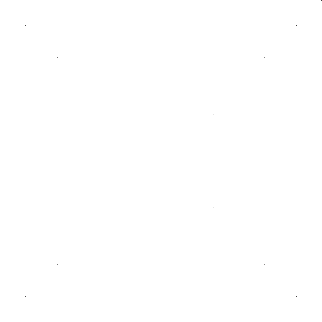MCB-DV-12369
A.PART 2022: ONSTAGEPLEASE! / Program 1
A.PART Festival for contemporary dance students and alumni 2022 ONSTAGEPLEASE!
ada Studio Berlin
curated by Julek Kreutzer and Diethild Meier
Following two digital editions of the A.PART Festival, the 2022 edition titled ONSTAGEPLEASE! is presenting choreographic work by young artists, trained in Berlin, who have been a part of the festival since 2020 and were unable to present their work live due to the pandemic.
Like every year, the 2022 A.PART Festival once again brings together diverse perspectives on choreography and dance, by alumni and students from Berlin’s dance education programs. In the spirit of the past two editions, the focus is on continuity, curiosity, solidary support, and fluctuating adaptation.
// PROGRAM 1 //
Silja Tuovinen - “yellow light, pause”
yellow light, pause is a dance performance that quotes the season of spring, and the form of an elegy. Through dance, the body crafts a gestural landscape, emptying forms, and frictions. The performance engages with melancholia that is not pathological, but generous and generative. The color yellow as a symbolic backdrop is self-contradictory, as it proposes both delight and alarm.
yellow light, pause is an artistic outcome of working with the question of how modes of production affect the way in which an artwork creates meaning. This has led to the use of what the artist calls rudimentary technologies and methods, as essential tools in bringing forth material, story, and dramaturgy of an artwork. yellow light, pause is the first performance of a triptych that makes up the artistic thesis project of Silja Tuovinen at Stockholm University of the Arts.
Tabea Antonacci & Marie Hufnagel - “ich sehe dich”
The choreography by Marie Elise Hufnagel and Tabea Antonacci examines interpersonal relationships among FLINTA* and their importance in today’s world. Together, the performers create a “safer space” in their rehearsals, which they also intend to bring to the stage. Playfully, honestly, and intimately, they explore the experiences and effects of “sisterhood” in everyday life, and in explicit moments. In doing so, they deal with the relationships with their physical sisters as well as with the community with other FLINTA*. They encounter trust, empowerment, and fun, among other things, but also challenges and differences.
Milica Tančić - “common thread”
Strings - a material representation of abstract connections to self and others. Pathways to establishing communication. A web is just a bunch of holes tied together by strings. Those holes, the in-betweens, and non-states are essentially the fabric of oneself. Eventually, it all comes back to self, and all the connections circle back to their source. An infinite beginning. The spotlight is on the dissonance between desires and reality – reaching out while collapsing inside.
The strings also seem to keep the pieces of self together. There is no rebellion, just a quiet little struggle. Yes, I do tend to suffer due to the tangled nature of self-expression. All I’m trying to do is to make the tangles of the mess softer, the voices of the internal noise clearer. The beauty is in the process.
Simone Gisela Weber & Julia Keren Turbahn - “Hypothetic Bodies” (Film)
In modern functional systems, such as economic, political, but also private systems, which they move through in the 21st century, people are expected to act as reflectively, quickly, and effectively as possible. The contemporary body is subject to a specific temporal regime of acceleration: restless, dissected, and hyperactive. Hypothetic Bodies breaks with this doctrine and explores the state of contemplation as an active gesture of questioning. The performance investigates bodies, sound, and materialities that meet in a vacuum between action and stasis. In this extreme state, these bodies develop their own distorted rhythm, togetherness, and temporality, which always contain a notion of potentiality.
Due to the pandemic measures, Hypothetic Bodies resulted in a film, in collaboration with the filmmaker Svenja Simone Schulte. The zoomed-in camera view allows the choreographic material to be explored differently. A cinematic dramaturgy of deceleration that follows the body closely evokes different bodily temporalities. Through specific editing, the body dissolves into individual parts, and the space it moves in becomes unidentifiable – a landscape that allows different bodies and temporalities to appear.
Milena Sundari Nowak & Tatjana Mahlke - “Ist das normal?”
In Ist das normal?, Milena Sundari Nowak and Tatjana Mahlke have a look at their own privileges, critique power, question current structures, and try to raise their awareness of those same structures.
Are you restricted in your everyday life because of your physical abilities? Can you move freely within your country? Do you identify with the gender assigned to you at birth? These are just three of the many questions that follow the two choreographers and dancers throughout the piece.
Again and again, they encounter the term support and the question of how support gets constructed politically and is carried out on structural and personal levels.
Ist das normal? listens attentively, takes apart our ego, and invites the audience, too, to perceive themselves in their own existence.
// CREDITS //
Choreographed and performed by: Silja Tuovinen, Tabea Antonacci, Marie Hufnagel, Milica Tančić, Simone Gisela Weber, Julia Keren Turbahn, Milena Sundari Nowak, Tatjana Mahlke
Curated by: Julek Kreutzer, Diethild Meier
Technical Management / Light Design: Robert Prideaux
Thanks to: Gabi Beier
[mt]
Powered by Froala Editor
https://apart-festival.blog/